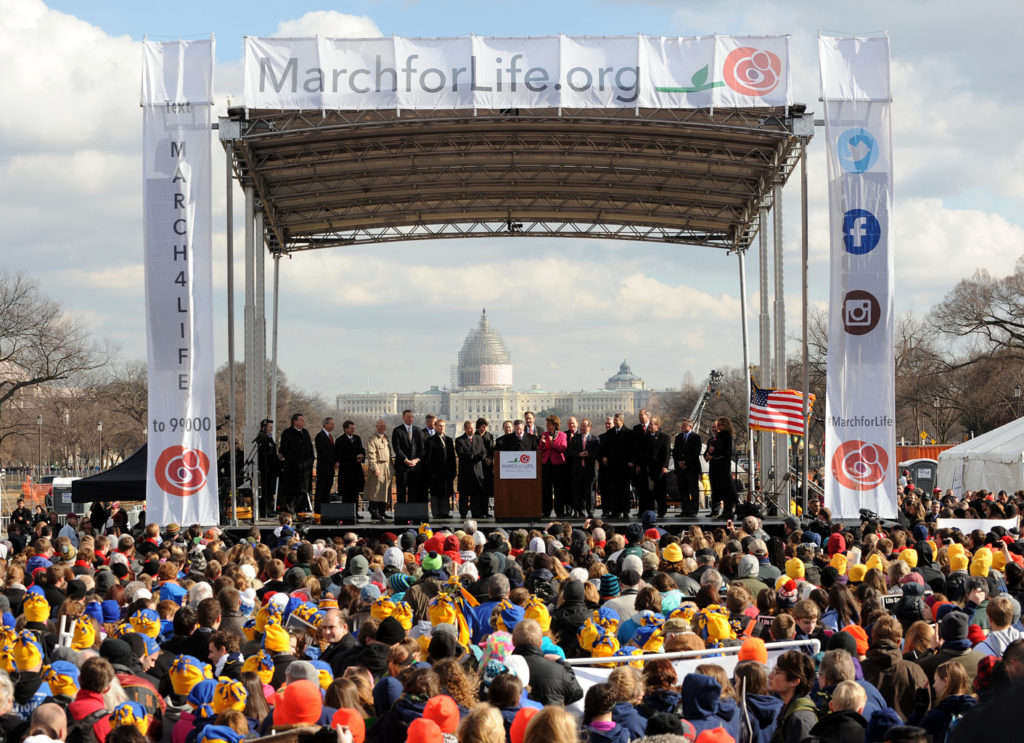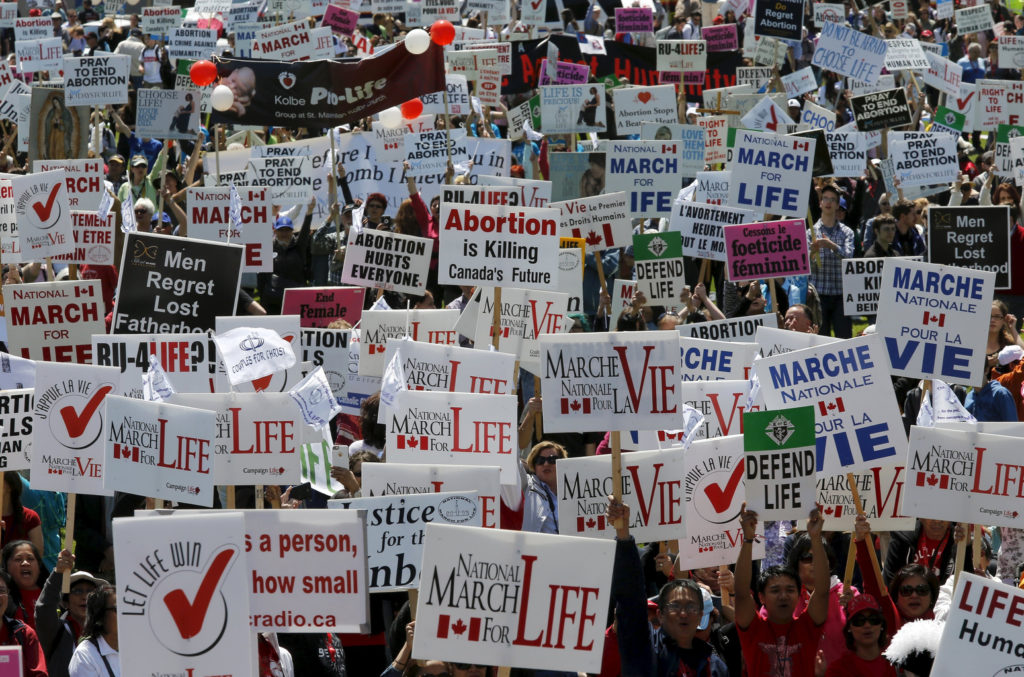Not quite, counters Robert P. George, chairman of the United States Commission on International Religious Freedom.
"I believe that our government does care about the plight of Christians in the Middle East," George said in an interview Tuesday. "What I’d like to see is religious freedom and the need to come to the aid of persecuted people and prisoners of conscience be elevated to a higher status in the minds of our policy makers."
Other concerns, such as geo-strategic issues, tend to take precedence, he says. George, a three-year member of the commission who was recently elected chairman, plans to work to make sure religious liberty concerns get their proper place at the policy-making table.
George, a Catholic, is McCormick Professor of Jurisprudence and Director of the James Madison Program in American Ideals and Institutions at Princeton University. He is the author of Making Men Moral: Civil Liberties and Public Morality and In Defense of Natural Law
USCIRF is an independent, bipartisan, federal commission created in 1998 through the International Religious Freedom Act (IRFA). USCIRF uses international standards, such as Article 18 of the Universal Declaration of Human Rights, to monitor violations of religious freedom or belief abroad. USCIRF makes recommendations to the President, Secretary of State, and Congress to help protect, defend, and advance this liberty.
Aside from the reason that government has an interest in ensuring the basic human right of religious liberty, there is also a practical effect from helping it flourish. As George points out on USCIRF’s website, a growing number of studies indicate that nations that honor this freedom tend to be less violent and more prosperous, less unstable and more democratic.
"Countries that fail to uphold religious freedom are more likely to be plagued by poverty and insecurity, tyranny and terrorism," he says. "Hence, religious freedom belongs prominently at the table with economic and security concerns in the conduct of our foreign policy."
What can you do as chairman that you couldn’t ordinarily do?
As chairman, I’ll be responsible for representing the commission’s position on religious freedom issues and advancing the recommendations that the commission has made and will be making to the State Department and to the president and to the congress, especially when it comes to the formation of policy toward the worst offending regimes—the ones with the worst records on religious freedom.
The commission issues a widely read report each year. Where are you in the process of preparing the next one?
The 2015 report was just issued a little over a month ago. We’re calling attention—and one of my jobs as chairman will be to take the lead in calling attention—to the recommendations and analyses contained in that report.
But the world continues to change, and so we’re already doing the most preliminary work with the next report, and in a few months we’ll get back up into full gear when it comes to assessing the situation of countries around the world for 2016.
Can you give us an overview of the state of religious freedom? Where and who are the worst offenders? Where are things getting worse?
They’re getting worse in most places. The Pew research group, which I’ve always found to be extremely reliable in its reporting on religious freedom, says that about 74% of the world’s population is living under regimes that either themselves violate the religious freedom rights of their citizens or minorities within their jurisdiction, or stand by idly and permit private actors—thugs, mobs, terrorists—to persecute and violate religious freedom rights of some members of the society. And sometimes that’s because governments just don’t want to do anything to protect those victims, and sometimes it’s because they have failed states with governments so weak that they can’t do anything, even if they wanted to, to protect those citizens.
The situation for Christians, especially in the Middle East, is getting worse, not better. We have seen a revival of the ancient, hideous curse of anti-Semitism, even in the developed democratic nations. There’s an increasing frequency of crimes against Jews, Jewish property, Jewish cemeteries, Jewish houses of worship, even in European nations, and not just East European but West European nations.
In some places a kind of aggressive secularism results in a violation of people’s religious rights. Sometimes they’re not on the level of the kinds of horrible violations you see in the Middle East and so forth, but nevertheless they’re things we need to be concerned about: forbidding Muslim girls from wearing their headscarves, as their religion requires, in public schools in places like France; forbidding Jewish or Christian girls from wearing small symbols of their religion as jewelry. These are not on the level of the oppression you see in places like Iran or Saudi Arabia or China or Pakistan or North Korea by any means, and yet, they are a concerning or worrying trend, and they show a basic disrespect for basic religious freedom rights.
Many Christians, both in the US and those suffering persecution in the Middle East, have a feeling that the administration doesn’t care about what’s happening to the Body of Christ in Iraq and Syria, throughout the Levant and the Maghreb. Are these feelings justified?
I believe that our government does care about the plight of Christians in the Middle East. I think much more can be done, especially on the refugee front, and I think that the two parties ought to cooperate to do whatever can be done, and the executive and legislative branches need to do whatever they can do to advance the cause.
What I’d like to see is religious freedom and the need to come to the aid of persecuted people and prisoners of conscience be elevated to a higher status in the minds of our policy makers. I don’t think our policy makers are ill-motivated. I don’t think they support religious oppression. I don’t think they don’t care; I wouldn’t say that. It’s just that with all the things, the considerations they have to bear in mind—and I understand that: geostrategic and military concerns, like Saudi Arabia, Pakistan; economic and trade concerns with China and Vietnam and other places. I get it, that those concerns have to have an important place at the table. But I don’t want religious freedom to be relegated to a second or third class concern. It needs to be right up there on the same level as these other concerns in formation of our foreign policy.
How would you characterize the state of religious liberty in our own country?
I can’t speak in my capacity as chairman of the commission or a commissioner because our statute does not authorize us to speak to that, and since I’m speaking to you in precisely that capacity I wouldn’t want to comment, other than to say two things: one, that I think the members of our commission have different views. We’re not of the same mind on all the thorny religious freedom questions we’re facing domestically. Two, I think we would all agree on this, that one of the very best ways we can promote religious freedom abroad is to honor it at home. I don’t think there would be any dissent on that.

















